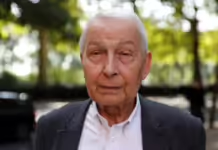One year ago today, on March 11th 2020, the World Health Organisation declared that the Covid-19 emergency had reached pandemic status.
The global death toll had passed 4,000 but in the UK the number of confirmed deaths was still in the single figures. In Merseyside, it was zero.
Now, a year later, the UK’s death toll is the highest in Europe and second only to the US. Merseyside has been one of the most heavily impacted areas and it has been a turbulent 12 months for the region.
On the anniversary of the pandemic, we take a look at how the timeline played out in Merseyside, and where we are now.
The early days
Coronavirus first entered local conversation earlier in the year than the pandemic announcement in March.
On January 31, coaches carrying 83 Brits recently returned from China arrived at Arrowe Park on the Wirral to be homed in isolation.
This day also marked the first confirmed domestic case of the disease in the UK and the moving of the quarantined evacuees from London to Merseyside was met with some fear and concern.
On February 3 another 11 evacuees arrived at Arrowe Park.
All of the group were virus-free and were discharged at the end of their quarantine period between February 13 and 15.
Merseyside hospitals set up Covid ‘pods’ to contain the virus if necessary but with no confirmed cases, February passed with relative calm.
Then March 3 brought the first confirmed case in the region, on the Wirral.
Following quickly was the first Liverpool case on March 4 and an emergency summit held by the Mayor.
Liverpool v. Atlético Madrid
March 11 brought about global pandemic status for Covid-19.
It was also on that same date that the now controversial match between Liverpool FC and Atlético Madrid took place at Anfield, attended by 52,000 people.
Concerns were highlighted at the time about 2,600 Spanish fans travelling to Liverpool for the game, as Spain had a much higher infection rate and was already registering deaths.
Madrid was a particular hotspot for coronavirus early on and was placed in lockdown just days after the match played here at Anfield.
On the day, England’s Deputy Chief Medical Officer Jenny Harries advocated for going ahead with mass gatherings and events.
She said: “Those sorts of events and big gatherings are not seen to be something which is going to have a big effect, so we don’t want to disrupt people’s lives.”
It is now widely believed by experts and the public that the Champions League match should never have gone ahead and a council enquiry into the extent of the consequences is still ongoing.
Last May, Edge Health (The Sunday Times) estimated that the game could be linked to roughly 41 subsequent deaths in Merseyside in the following weeks.
Only two days later the Premier League was called off and football was suspended, marking Liverpool v. Atlético Madrid as one of the last matches before everything changed.
Nationwide lockdown as figures begin to climb
For most of the UK, the date March 23 stands out as the pivotal turning point in the public health crisis.
When Boris Johnson announced a nationwide lockdown, three days after closing all non-essential businesses, the public began to realise the severity of the situation.
In Merseyside, March 23 was also a local turning point in the pandemic. The recording of the first confirmed death caused by Covid-19.
This initial death was in Wirral and was followed closely on March 24 by the first related death in Liverpool.
From early April figures began to incline rapidly in the region, with Joe Anderson claiming on April 1 that he believed the actual death toll to be much higher than indicated.
Merseyside’s care homes became sites of devastation as they suffered coronavirus outbreaks beginning with Oak Springs in Wavertree on April 3.
Staff worked hard to shield residents from the virus but sadly 16 died during the outbreak and this became a pattern across the region’s residential homes.
On April 4 there were already 50 deaths in Liverpool alone.
Highest death toll in Europe
During the first week of May, the UK hit another Covid milestone as it became the country with the highest death toll in Europe, overtaking Spain and Italy who initially suffered greatly.
In Merseyside, there had been 920 deaths by May 9. Almost all of these deaths had occurred during a four-week period.
The region was now garnering a reputation as one of the main hotspots for the virus.
April through to May was the first peek of the pandemic and afterwards, the infection rate and death toll began to slow down.
On June 11 just one single death was recorded in Merseyside for the first time since March. This was a relief to a region that had suffered disproportionately from the virus.
Despite the tragedy endured in the area, 2,000 LFC fans flocked to Anfield on June 25 to celebrate the team’s first Premier League title.
Celebrations continued for a few days and were widely condemned by the council, Merseyside Police and even LFC officials and players.
‘Without Walls’ and a momentary relief
With sunny weather came the relief of the majority of restrictions across the country.
July 4 saw the reopening of pubs, restaurants and non-essential shops. On the same day, Merseyside had reached a total of 1,232 deaths across the region.
Liverpool City Council launched the ‘Without Walls’ campaign which installed outdoor seating on Bold Street and Castle Street.
The pedestrianisation of these streets allowed independent restaurants to operate outside areas over summer to encourage a return to businesses with adequate social distancing.
This European-style way of dining was welcomed openly by most of the public and local businesses.
Summer brought a lower infection rate and a relief for the region as people swarmed to bars, cafes and parks to reconnect with friends and family.
Back on the rise and military guests
Entering October, Liverpool had the 2nd highest infection rate in the country with 928.2 cases per 100,000 people.
This was disproportionately high and the region’s hospital wards began to struggle once again under the strain of new admissions.
On October 14, Merseyside became the first region to be placed in Tier 3 under the new tiered system.
This high alert meant that all social mixing indoors was prohibited, and pubs and bars were closed. In addition to these measures, gyms and leisure centres, betting centres, adult game centres and casinos also closed.
Tier 3 only remained for three weeks before the entire nation was placed in a second full lockdown, for a four-week period.
November saw the region take centre-stage of the national crisis as Liverpool became the site of a mass-testing project.
The city’s pilot scheme was led by the military as residents without symptoms were encouraged to come forward for lateral flow testing at sites around the area.
The regime was dubbed ‘operation moonshot’ and aimed to eventually introduce regular testing across England of asymptomatic carriers.
Although the military has left the city now, many of the testing sites remain and to date 255,556 LFT has been carried out. Of those 5,773 have been positive.
Since mid-October Merseyside has endured a long winter of restrictions, with only a brief period of relief from December 2 to December 30.
Strict restrictions remain in place across the nation and only now with the vaccination programme are we beginning to see the endpoint.
Where are we now?
At its worst point, in October, Merseyside had extremely high infection rates with Liverpool recording 928.2 cases per 100,000 people.
Today that infection rate is 62.72 per 100,000 across the region and 54.4 per 100,000 in Liverpool.
This is the lowest rate since September 5 and a welcome decline for local residents and public officials, who hope the numbers will continue to fall.
But Merseyside has experienced substantial suffering over the last 12 months with the total death toll currently standing at 4,394 (as of March 9). The exact figure could be even higher than that due to those who have died at home or with other contributing conditions.
Of those deaths, 1,427 were registered in 2021 meaning almost 1/3 of all deaths have taken place in the last 10 weeks.
The Merseyside region has been affected more than most areas in the UK, both with bereavements and harsh restrictions which have threatened the survival of much-loved local businesses.
The Covid-19 Bereaved Families for Justice UK has been joined by many local families who have lost loved ones to the virus and believe the government should be held accountable.
It will likely be a long time before any public enquiries get underway or come close to a conclusion, but for now, the region must breathe a sigh of relief that the worst is behind us.
With infection rates falling and almost 500,000 vaccines administered in the Liverpool City Region alone, this is another pivotal moment for Merseyside – but an encouraging one.
Image: craftivist collective












